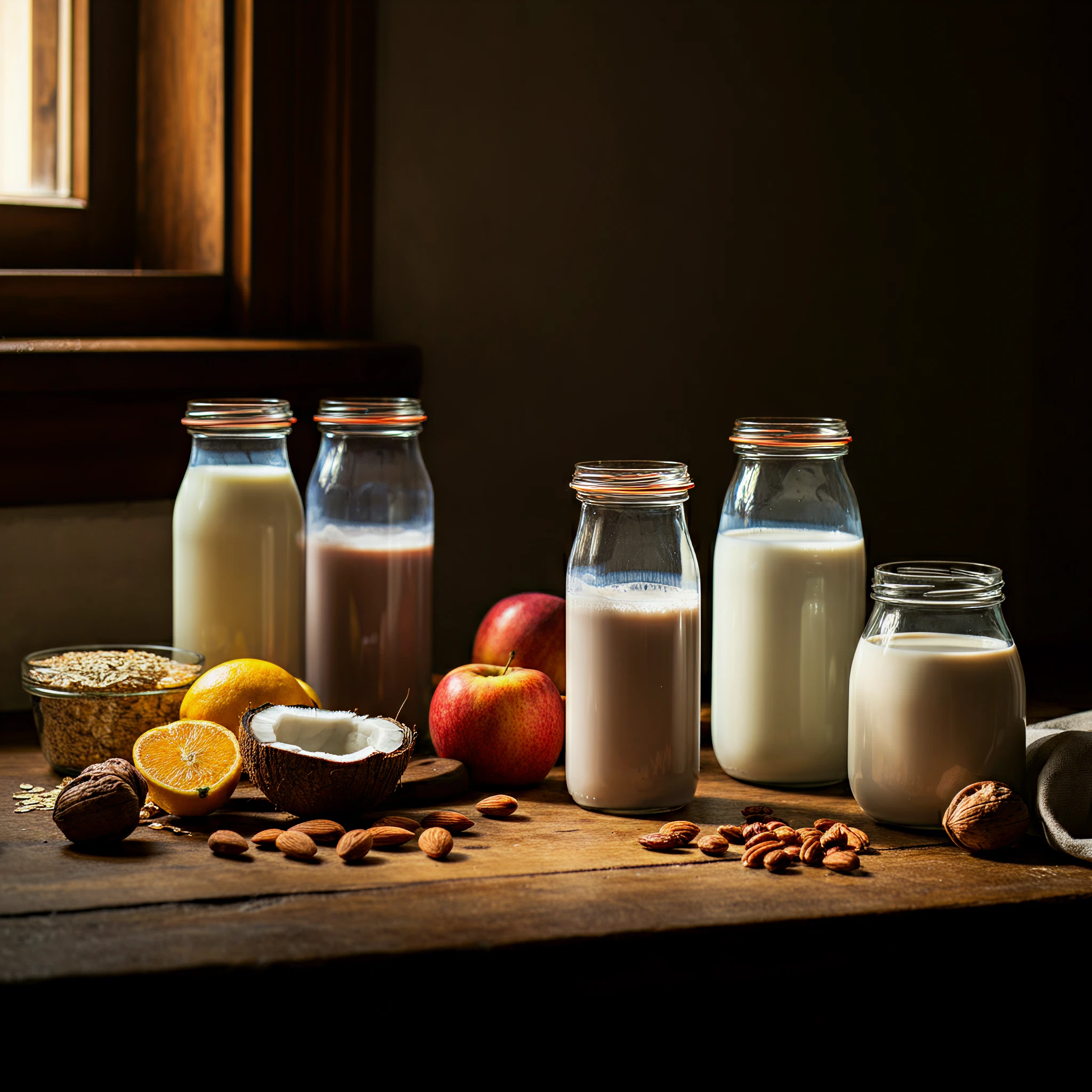Thinking about giving up dairy? Whether you’re lactose intolerant, health-conscious, or simply exploring a dairy-free lifestyle, the idea of cutting out milk, cheese, and yogurt can feel overwhelming. But don’t worry—with some planning and helpful tips, you can transition to a dairy-free diet smoothly. This guide will show you step-by-step how to give up dairy while meeting your nutritional needs and enjoying delicious dairy alternatives.
Why Give Up Dairy?
Before we explore how to cut out dairy, let’s take a brief look at why people choose to go dairy-free. Some of the most common reasons include:
- Lactose intolerance and allergies: Many people struggle to digest lactose, a sugar found in milk, or have allergies to milk proteins.
- Improved digestion: Eliminating dairy may help reduce bloating, gas, and other digestive issues.
- Clearer skin: Some studies suggest that reducing dairy intake can improve acne and skin health.
- Weight management: Cutting out high-fat dairy products can support weight loss or help maintain a healthy weight.
- Ethical and environmental concerns: Dairy production contributes to greenhouse gas emissions, and many choose a plant-based lifestyle for environmental or animal welfare reasons.
Now that you know the benefits, here’s how to transition to a dairy-free lifestyle.
6 Steps to Give Up Dairy
1. Start Small and Gradual
Giving up dairy doesn’t have to happen all at once. Start by eliminating one type of dairy product at a time. For example:
- Week 1: Skip milk in your coffee or cereal.
- Week 2: Replace yogurt with a dairy-free alternative.
- Week 3: Find substitutes for cheese and butter.
Gradual changes make the process less overwhelming and give your taste buds time to adjust.
2. Stock Up on Dairy-Free Alternatives
Thanks to the popularity of plant-based diets, there are plenty of dairy-free alternatives available. These options don’t sacrifice flavor or nutrition:
- Milk: Almond, oat, soy, coconut, or cashew milk.
- Yogurt: Coconut-based, almond-based, or cashew-based yogurts.
- Cheese: Look for vegan cheeses made from nuts, soy, or starches.
- Butter: Switch to plant-based butter spreads or use coconut oil in recipes.
- Ice Cream: Indulge in plant-based ice creams made from coconut, almond, or oat milk.
Experiment with different brands and flavors to find the ones you like best.
3. Read Food Labels Carefully
Hidden dairy ingredients lurk in many processed foods, such as crackers, bread, soups, and salad dressings. Watch out for terms like:
- Milk
- Whey
- Casein
- Lactose
- Butterfat
- Cream
Look for the “dairy-free” or “vegan” label to ensure your food choices align with your goals.
4. Focus on Whole, Nutrient-Rich Foods
When giving up dairy, it’s important to replace the nutrients that dairy provides, especially calcium, vitamin D, and protein. Add these to your diet:
- Calcium-Rich Foods:
- Leafy greens like kale and collard greens
- Almonds
- Tofu
- Fortified plant-based milks
- Vitamin D Sources:
- Mushrooms
- Fortified plant milks or cereals
- Sunshine exposure (15-20 minutes daily)
- Protein Options:
- Lentils
- Chickpeas
- Tempeh and tofu
- Nuts and seeds
5. Plan Your Meals
Set yourself up for success by planning dairy-free meals ahead of time. Look for recipes specifically designed for those avoiding dairy. Some ideas include:
- Oatmeal with almond milk and fresh fruit for breakfast.
- Salads with avocado instead of creamy dressings.
- Pasta with marinara or dairy-free pesto sauce.
- Stir-fry with tofu and coconut milk-based curry sauces.
Batch cooking and meal prepping can also make daily choices easier.
6. Be Prepared for Cravings
Cheese is often the hardest thing to give up for many people. If you find yourself craving that creamy, tangy flavor, try these ideas:
- Sprinkle nutritional yeast on popcorn or pasta for a cheesy flavor.
- Try cashew cheese spreads or vegan parmesan.
- Enjoy hummus, avocado, or tahini as creamy substitutes in sandwiches and wraps.
Cravings may persist at first, but your taste buds will adapt over time!
Addressing Common Challenges
“What if I Slip Up?”
It’s okay! Transitioning to a dairy-free diet takes time and effort. If you accidentally consume dairy, don’t be hard on yourself. Learn from the experience and keep moving forward.
“Will I Miss Out on Nutrients?”
Not at all. There are plenty of non-dairy foods rich in calcium, vitamin D, and protein. Fortified plant-based products make it easy to meet your nutritional needs.
“Where Will I Find Dairy-Free Recipes?”
The internet is full of resources. Websites and social media platforms offer an abundance of dairy-free recipe ideas. Experiment and make the transition fun.
Final Thoughts
Giving up dairy doesn’t mean giving up delicious food or key nutrients. By focusing on gradual changes, stocking your pantry with plant-based dairy alternatives, and planning your meals, you can easily transition to a dairy-free lifestyle.
If you’re ready to make the switch, why not start today? Your body, taste buds, and possibly even the environment will thank you!
Looking for more tips and recipes? Sign up for our email newsletter to stay inspired on your dairy-free journey.








